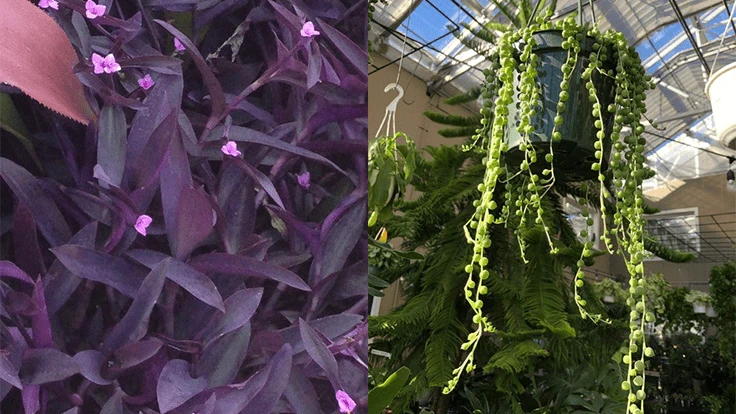
The world is full of creepy plants. They grow deep in the jungles of South America or high in the Himalayan Mountains or hidden in African deserts. Plants like Venus flytrap and brain cactus look like they’ll bite or poke you if you look at them the wrong way and they actually might, but most of these scary plants grow in extreme conditions in faraway places. Bumping into them soon is unlikely. But if you’re looking to stock the exotic and unusual, the following five plants provide a spooky look during Halloween and beyond.

String of Pearls (Senecio rowleyanus) is a fun low-maintenance plant whose round “leaves” look like little peas on strings. This succulent evolved in the shaded desert areas of southwest Africa, creating little spherical balls to allow it to store water and minimize evaporation. Indoors, it needs bright indirect light, a light cactus mix soil and watering once every few weeks. One can’t pluck the peas and eat them though as they’re mildly poisonous. This plant’s gems are meant to be enjoyed with the eyes.

Purple spiderwort (Tradescantia pallida ‘Purple Heart’) even has a creepy name! This plant, which has neither warts nor spiders, grows in long strands of juicy purple stems with narrow leaves, giving it a mysterious air. When it blooms, the triangular pink flowers downright glow against the smoky foliage. Purple Spiderwort needs bright light, the brighter the better, to hold that alluring color and well-draining soil. To make the plant bushier rather than long and trailing, stems can be trimmed just after each leaf intersection.

Black Magic Elephant Ear (Colocasia esculenta ‘Black Magic’) is a swamp plant so it’s perfect for people who tend to kill plants because they water too much. Its big dark leaves don’t like full sun but rather bright filtered light. If given that and an occasional feeding of fertilizer, it rewards with a flurry of rubbery black leaves that enchant with their smooth texture and dusty veins. When it wilts in late November, no need to panic. Colocasia wants to go dormant for a few months. In February, the magic will appear again.

Hindu rope plant (Hoya carnosa ‘Compacta’) twists and turns as if it has a mind of its own. Its leaves sport a waxy coating and the blooms impress with starry pink flowers. A native to Eastern Asia and Australia, it needs bright indirect light and only occasional watering. In rainforests, it grows up trees so it will grow most vigorously in an orchid-type of soil that allows roots to get air. This lovely often hangs out like a still life for a while as it grows slowly. Once it gets happy, it will take off, especially if given a little trellis to grab on to.

Ever watch Dr. Who? Medusa’s Head seems like a plant that could star as the Doctor’s alien enemy. Its spiny tentacles grow up to a foot in length and undulate like a head of snakes. When soaking in six hours of sunlight (most likely in spring or summer), Euphorbia flanaganii will produce a weird tuft of yellow flowers, almost like a shriveled mushroom. Unlike other euphorbias, this native of South Africa likes weekly watering during warm weather. It also appreciates lighter soil though it’s not too fussy about quality. If grown in a window that gets good direct sunlight, Medusa’s Head may literally grow to the size of a human head so watch out!
Karen Hugg is a certified ornamental horticulturalist and master pruner. In addition to gardening articles, she writes literary thrillers and mysteries inspired by plants. Her novel, “The Forgetting Flower,” is about a woman hiding a dangerous plant in Paris. She lives in the Seattle area with her husband, three kids, and four pets. For more information, check out karenhugg.com.
Latest from Garden Center
- America in Bloom announces 2026 program launch and celebrates 25 years of growing vibrant communities
- AmericanHort launches HortCred to advance skills development in the green industry
- Oasis Grower Solutions announces new northeast territory sales manager
- Amanda Solliday named senior manager of Sustainabloom
- New McCarthy-Family Flowers Legacy Fund supports multi-generational retail florists
- Monrovia releases new retail program, Landscape Legends, to mark 100th anniversary
- USDA to conduct 2025 Organic Survey
- Save the date for the 78th Santa Barbara International Orchid Show





